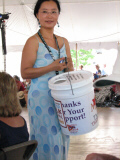
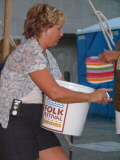
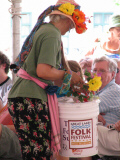
|
|
As already mentioned, one of the best
dynamics of the Great Lakes Folk Festival is it is free. But, like all
things, it costs money to put in on. Beyond corporate sponsorships,
the festival has what it calls its "bucket brigade." These volunteers
come in all shapes, sizes, and ages, from the elegantly dressed to the colorful.
They wander throughout the festival giving you a "thank you" sticker to don
for any amount of money dropped into one of their buckets in support of the
festival. Nobody is precluded from participating because of tight finances.
Donna and I cannot afford a lot, but we drop a dollar (occasionally a five)
here and there throughout each day of the weekend. The festival's philosophy
strongly parallels those I present through the Center, and other dynamics
represented in this website.
Beyond what you choose to drop into
a bucket, expenses for the weekend are basically what you spend for food and
drink, and for parking. The first years we attended, we parked in the
free outer lots and rode the buses to and from the festival. This year
the cost to take the bus was only twenty-five cents. However, in 2007, and
recent years, we have chosen to park right by the festival in one of the private
lots (it cost us $7 for the day and the money was being raised by an MSU student
for college. The People's Church also offers parking for a fee).
All in all, the festival can be as expensive
or inexpensive as you choose it to be. We try to support it as best
we can by eating there locally or from a festival food vendor (lots of options),
a purchase of a CD or two, and being as generous as possible.
|
|
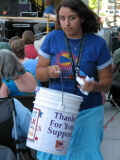
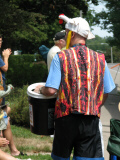
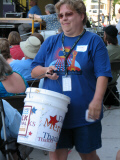
|